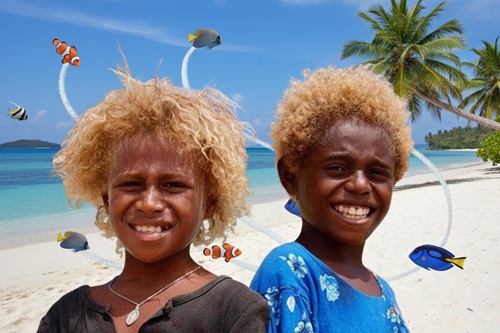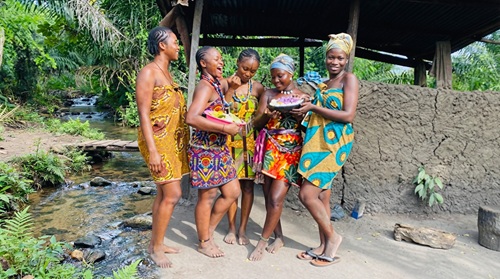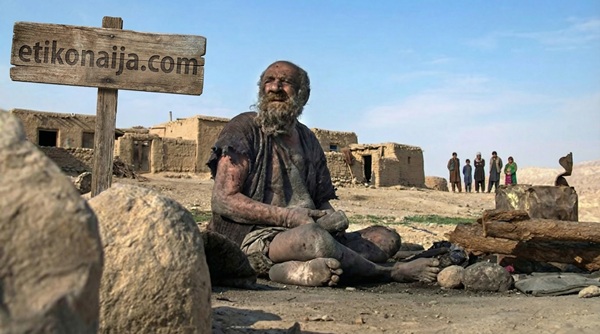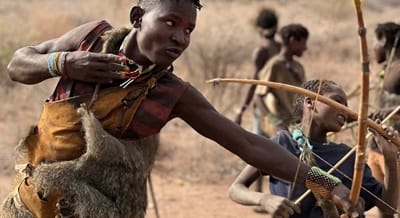The Solomon Islands often attract attention because of a single striking feature. A number of its Indigenous people, who have some of the darkest complexions in the world, naturally grow bright blonde hair. This trait appears without bleaching, without European ancestry, and without cosmetic influence. It is a native genetic characteristic that emerged thousands of years ago and has remained part of the islands’ identity. This contrast between dark skin and light hair has made the Solomon Islands one of the most studied regions in Oceania.
While the blonde hair is an important point of interest, the islands hold far more than this unusual genetic trait. They possess one of the most diverse linguistic landscapes on earth, a long history of migration, a story marked by conflict and resilience, and a cultural tradition that has evolved across centuries. This article presents a detailed account of the islands’ history, the origins of their people, the scientific research behind their blonde hair, and the social and cultural setting in which this community has developed.
Geography and National Background
The Solomon Islands is located in the South Pacific Ocean, east of Papua New Guinea and northwest of Vanuatu. It consists of 992 islands, though only 147 are inhabited. The nation gained independence from the United Kingdom in 1978 and now operates a parliamentary system. English is the official language, though most people speak Solomon Islands Pidgin along with their local languages. Today, the country is led by Prime Minister Jeremiah Manele of the Unity and Responsibility Party.
The national currency is the Solomon Islands Dollar (SBD). The economy relies mainly on agriculture, forestry, fishing, and small-scale trade. Tourism is developing, although limited by transportation and infrastructure challenges. The islands’ remote location, rugged terrain, and scattered settlements have helped preserve cultural traditions that stretch back thousands of years.
Early Human Settlement: Tracing the First Peoples of the Islands
Archaeologists believe the first people settled in the Solomon Islands many thousands of years ago. Evidence from pottery, tools, language patterns, and genetic markers points to early migrations from Southeast Asia. Many researchers connect the ancestors of modern Melanesians to ancient human groups such as the Denisovans, who moved eastward after splitting from a common ancestor with the Neanderthals.
These settlers spread from island to island, building small communities along the coast and inland valleys. Over time, they developed their own social systems, farming methods, and seafaring traditions. Many villages were built near natural lagoons, while others constructed artificial coral islands, especially around northern Malaita. These artificial islands provided protection during periods of conflict and also served as cultural gathering points.
The early populations of the Solomon Islands were not isolated. Migration routes stretched across the Pacific. People moved from the Solomons toward Vanuatu, New Caledonia, Fiji, Tonga, and Samoa. Later waves of Polynesian sailors returned to settle in atolls close to the Solomon Islands. These exchanges helped shape languages, farming traditions, and social structures that persist today.
Because of their long history of settlement and migration, the islands have become one of the most linguistically diverse areas in the world. Hundreds of languages are spoken, each tied to its own heritage and identity.
European Arrival and the Naming of the Islands
The first recorded European visitor was the Spanish navigator Álvaro de Mendaña, who reached the region in 1568. During his exploration of Guadalcanal, he saw signs of alluvial gold and believed he had found the legendary source of King Solomon’s biblical riches. This assumption inspired the name “Isles of Solomon.”
Over the next three centuries, explorers from the Netherlands, France, Germany, and Britain visited the islands. By 1893, the British established a protectorate over several island groups, including Guadalcanal, Malaita, Makira, and New Georgia. Tulagi was selected as the first colonial capital.
The British expanded their control steadily until they administered a large part of the archipelago. The colonial period brought new systems of governance, missionary activity, and limited commercial development. Yet many communities remained rural, maintaining their own traditions and languages.
The Strategic Role of the Solomon Islands During the Second World War
World War II left a strong mark on the Solomon Islands. The region became one of the most contested areas in the Pacific theatre. The Battle of Guadalcanal, which began in 1942, was a long and intense conflict between Japanese and Allied forces. Both sides suffered high casualties, and parts of the islands were permanently altered by the fighting.
Many of today’s roads and airfields were first built during this period. Remains of warplanes, sunken ships, and unexploded ordnance can still be found across the islands and surrounding waters. The conflict also introduced the region to outside influences, though the islands maintained much of their cultural independence after the war ended.
Path to Independence and Modern Governance
After decades under British rule, local leaders pressed for autonomy. On 7 July 1978, the Solomon Islands became an independent state. A parliamentary government was established, with English as the official language and the Solomon Islands Dollar adopted as the national currency.
In 1998, internal tensions erupted on Guadalcanal. Rival groups clashed over land, economic inequality, and ethnic differences. The violence lasted several years and threatened national unity. In 2003, neighboring Pacific states launched the Regional Assistance Mission to Solomon Islands (RAMSI) to help restore order. Over time, peace returned, and the country focused on rebuilding its institutions and local economies.
Today, the Solomon Islands continue to balance traditional lifestyles with modern governance. Rural communities remain central to the country’s identity, and many families rely on fishing, gardening, and small-scale farming.
A Distinct Genetic Trait: The Blonde Hair of Melanesians
For generations, the blonde-haired Melanesians were a subject of speculation. Many visitors debated how a population with deep brown skin could have naturally fair hair. Theories ranged from environmental influences such as sunlight exposure to diet-based explanations involving fish or minerals. Others attributed the trait to European contact, although many islanders with blonde hair have no European ancestry whatsoever.
Scientific research eventually provided the answer.
The 2012 Study That Solved the Mystery
In 2012, researchers from Stanford University and the Nova Scotia Agricultural College conducted the first large-scale genetic analysis of the blonde-hair trait in Melanesians. The study included more than a thousand participants across multiple villages. The researchers collected saliva samples, hair and skin pigmentation readings, and basic health data.
The results showed that the blonde hair in the Solomon Islands is caused by a distinct variant of the TYRP1 gene. This gene influences melanin production in hair. The variant found in Melanesians is completely different from the gene associated with blonde hair in Europeans. This means the trait evolved independently in the Pacific region.
The genetic mechanism follows a recessive pattern. A person must inherit two copies of the variant to display the blonde trait. Approximately 26% of Solomon Islanders carry the gene, and the feature is most common in children. As many individuals grow older, their hair darkens, though some retain their blonde color into adulthood.
The discovery is an important example of convergent evolution, in which separate populations develop similar physical traits through unrelated genetic pathways. It also demonstrates the complexity of human diversity. Physical appearance does not always reflect distant ancestry, and similar traits can emerge in distinct parts of the world.
Fieldwork Challenges and Local Collaboration
The researchers faced practical difficulties in gathering data. Many villages are accessible only by boat, footpaths, or small aircraft. The lack of electricity, laboratories, or running water meant the team had to transport all research equipment into the field. They worked closely with local chiefs, speaking mostly in Solomon Islands Pidgin, to gain community approval.
Despite the challenges, the field study produced clear genetic signals. The TYRP1 variant was so strongly associated with blonde hair that it stood out immediately. This clarity surprised the researchers, who usually require much larger sample sizes in similar studies.
The findings were welcomed by many islanders, who had long known the hair color was part of their heritage. The study provided scientific confirmation while respecting local identities and traditions.
Cultural History: Change, Continuity, and Identity
Before the spread of Christianity, the Indigenous people of the Solomon Islands practiced traditional belief systems. Historical records note activities such as ritual cannibalism, headhunting, and local warfare. These practices were shaped by social structures, spiritual customs, and clan rivalries.
In the late nineteenth and early twentieth centuries, missionaries arrived and gradually encouraged conversion to Christianity. Today, more than 90% of the population identifies as Christian. Even so, cultural traditions remain strong. Storytelling, dance, carving, and ancestral rituals continue to influence community life.
Each island holds its own customs, dialects, and social rules. Village gatherings, communal work, and respect for elders are central to daily life. Although urban areas are growing, many people still rely on subsistence farming, fishing, and artisanal crafts.
The blonde hair of some children is seen as natural and familiar. It is not treated as unusual within the community, even though it continues to attract curiosity from visitors and researchers.
The Broader Significance of the Solomon Islands’ Genetic Diversity
The Solomon Islands illustrate an important point about human variation. Traits such as skin color and hair color do not follow simple patterns. They emerge from combinations of genetics, migration, environment, and population structure. The islands stand as an example of how deeply human history is interwoven across continents and time periods.
The blonde-haired Melanesians demonstrate that genetic diversity cannot be understood through stereotypes or narrow assumptions. Their experience shows that evolution does not follow one path. Instead, it produces unexpected outcomes that enrich our understanding of humanity.
The Solomon Islands remain a remarkable place for many reasons. Their geography, history, and cultural traditions form a complex and resilient community. The presence of natural blonde hair among their dark-skinned population adds another layer to this story. It reflects thousands of years of migration, genetic adaptation, and cultural continuity.
This trait, long debated and often misunderstood, has now been scientifically explained. Yet it is only one part of a much larger picture. The Solomon Islands tell a story of ancient origins, colonial encounters, wartime struggles, and ongoing cultural strength. Their people continue to adapt to modern challenges while preserving the traditions that define their identity.
In studying the islands, researchers gain a clearer view of human diversity. And in learning about their history, readers gain a deeper understanding of the Pacific world and its unique heritage.






